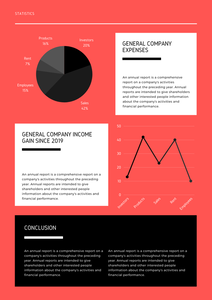Each year, businesses need to provide an annual report to serve two purposes – informing the company’s shareholders about the activities it has performed over the last year and reporting important financial information to the government.
When it comes to creating the annual report, many business owners face a dilemma – should it be printed or published online.
As we’re approaching the end of this year, it’d be wise to make the decision now and initiate the process. In this post, we’ve jotted down the major pros and cons of both digital and printed annual reports to help you decide on the right one for your business.
Printed Annual Reports
While it may seem like an old method to have your business’s annual report printed, it offers some unparalleled benefits.
- It’s an undeniable fact that digital spaces have become cluttered. The recipients of the annual report may need to spare a considerable amount of time to find it in their inbox. On the contrary, they can check out printed annual reports anytime and from anywhere.
- Top-tier print service providers have the ability to transform bland and boring annual reports into engaging ones with the help of innovative design styles and materials. Such additions lend the annual report a collectible value, increasing the business’s goodwill.
- Creating printed annual reports takes considerably more time and effort than publishing digital ones. These additional efforts demonstrate that you’re serious about your business’s growth, which is typically considered a positive indication by potential investors.
- The report has to be engaging enough in terms of graphic design and other elements, which require professional expertise. It means, in almost all cases, your business would need to hire a reputable print service provider for the job.
- Printing annual reports usually costs significantly more than publishing them digitally, and you’d also need to factor in the mailing costs.
Here’re some unique advantages of having digital annual reports.
- You can quickly create a digital annual report, thanks to the availability of free and paid tools.
- Digital reports can easily be shared with others without bearing any additional cost. For non-profit organizations, this is a cost-effective way to attract more philanthropists.
Let’s take a look at some major disadvantages of digital annual reports.
- There’ll be a high probability of the shareholders or potential investors not getting thoroughly involved with the report. This is simply because most people tend to skim online content.
- Free digital annual report makers often lack the features required to create truly captivating content. Therefore, you may either need to hire an expert professional or go for paid tools – both of which cost money.
- It may not be possible to send out digital annual reports to every intended recipient. This is because there’re still lots of people who aren’t tech-savvy or don’t have stable Internet connections.
How to Decide Between Printed Annual Reports and Digital Ones?
As now you’ve got a clear understanding of the advantages and disadvantages of both formats, it’s time to make the final decision.
Basically, the decision should depend on your business’s objectives and the report’s intended recipients. For example, if you want the report to be accessible to the general public, going digital should be your best bet. But again, you must consider the legalities as well in terms of meeting your business’s legal obligations to disclose sensitive information.
Printed annual reports will be your best option if you’re planning to provide potential investors with something tangible. It’ll also be
advantageous for older shareholders, in particular, who often don’t trust the Internet.
Ideally, you should maintain a mix of printed and digital annual reports and send them to appropriate recipients depending on their requirements.

